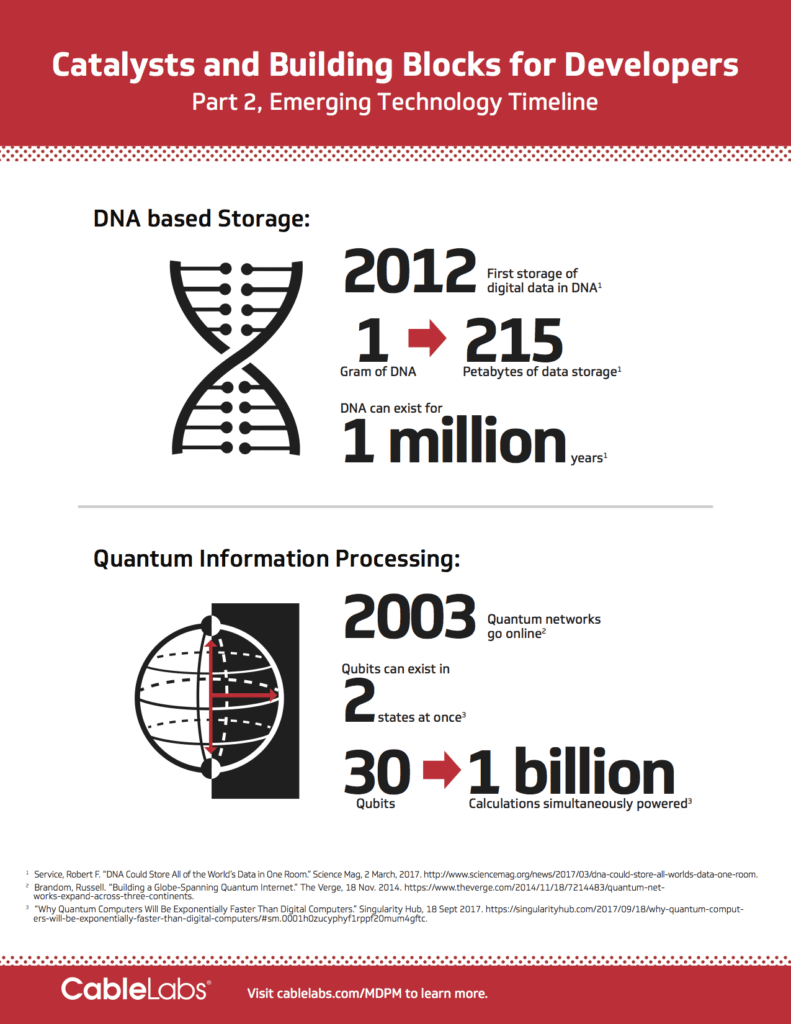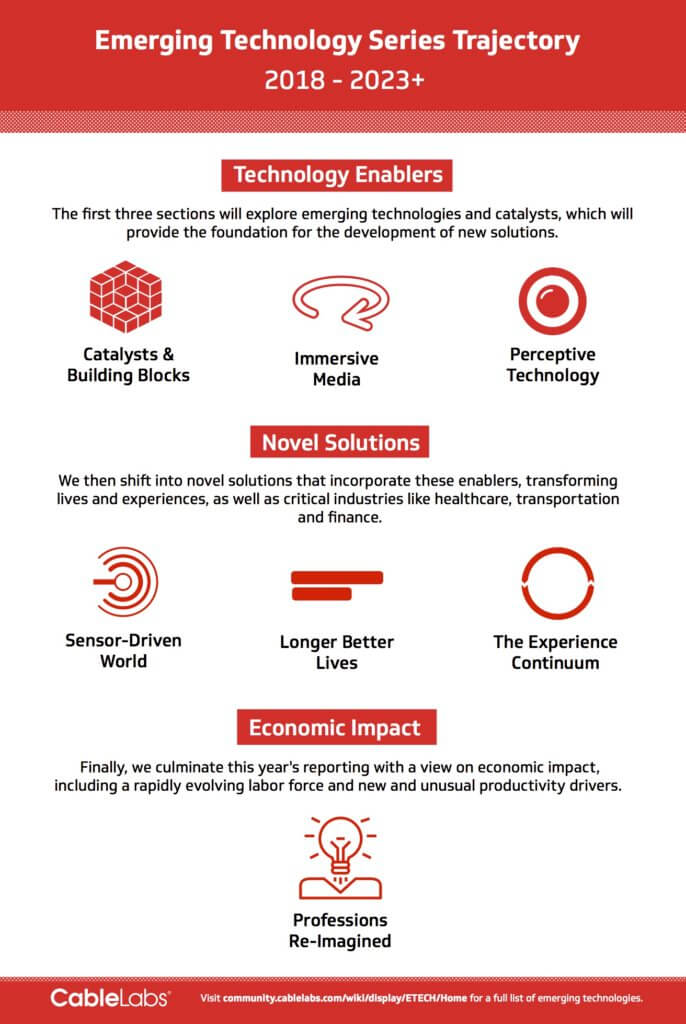Technology
Power your Product Roadmap with Perceptive Technologies
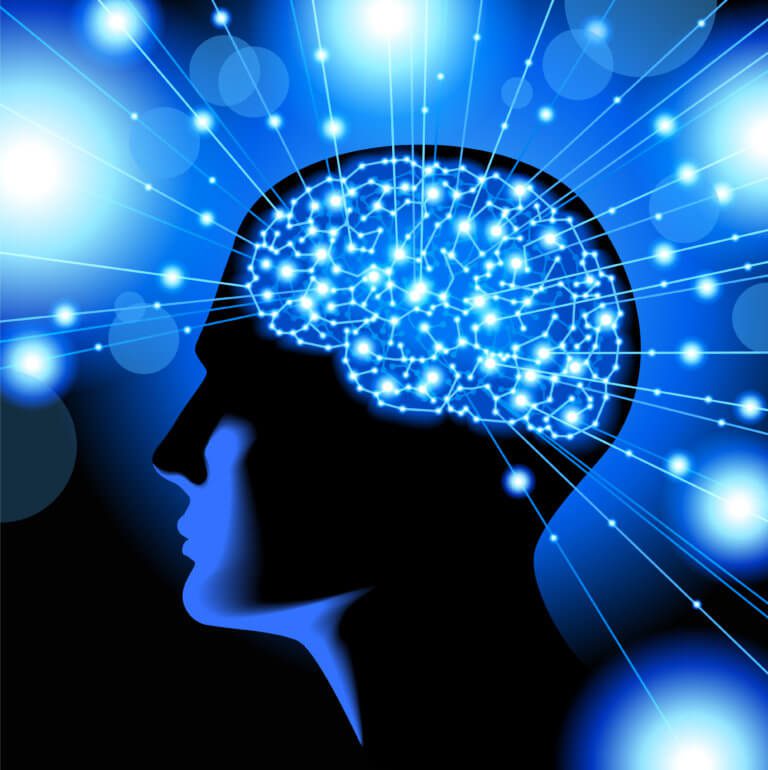
Did you get it? Are you sure? Missed and mixed signals are common problems with human interpretation, and perceptive technologies have the power to correct both. New advancements in perceptive technologies can help you design and deliver more compelling and personalized experiences, from entertainment to engagement, which will not only track how your end users are responding in real-time but also adjust accordingly.
Why should you care? Because your competitors are already incorporating emotion detection and personalized responses into their experience design. Customer service long ago adopted heat maps for callers to prioritize and route complaints, but there are less obvious and more compelling ways in which perceptive technologies can help advance your brand and product roadmap.
Small but Mighty
Sensors are the foundation of perceptive technologies and generate signals for real-time or asynchronous analysis. Sensors fall into a basic dichotomy. The distinctions between sensor types and use cases are significant, and the rapid emergence of new classes of virtualized sensors will have a significant impact on applications.
Hard Sensors
Hard sensors measure the physical attributes of an object. They can measure weight, vibration, pressure, touch, movement and so on. Lights in a room might sense your presence, for example, and dim or brighten accordingly. Soap and paper towel dispensers that sense your hand are quite common. Parking sensors in congested areas alert drivers to open spots, and you’ve probably also heard your car chirp at you when an obstacle is detected as you try to change lanes.
Common functions of hard sensors include the following:
- Environmental sensors measure light values, temperatures, air quality and so on
- Chemical sensors measure allergens and toxicants in the air
- Presence sensors measure the location and movement of objects
- Biometric sensors measure physiological attributes such as heart rate, blood pressure and glucose levels
Virtual Sensors
Virtual sensors, also referred to as soft sensors, allow for abstraction. Virtual sensors aggregate one or more sensor data streams and produce a derived output. They are powered by simple software analytics, change detection algorithms, and other feature detection techniques. They can recognize well-known patterns, as well as, atypical behaviors. You can imagine that virtual sensors can be extended to analyze voice recordings in real time to “hear” anger in someone’s voice, or to analyze real-time video to “see” sadness in a detected frown.
Emotion Sensing—Powered by AI
The human emotional state is never static, which makes the task of sensing an evolving emotional state highly complex. Multi-modal signals derived via speech and image recognition, natural language understanding, biometrics and other AI techniques that detect abnormalities relative to established baselines are key. When combined in analysis, they provide the subtle cues about a person’s intention and state of mind as well as their physical, psychological and emotional well-being. Want to detect sarcasm in your teenaged children? New solutions might soon help you.
Multi-modal input data types include the following:
- Spoken words (natural language processing)
- Voice tone (prosody)
- Facial recognition (emotion)
- Hand gestures
- Gaze and focus
- Body language/posture
- Dynamic physical behavior
- Spatial proximity
- Excitement and stress levels (heart rate, pupil dilation)
Emotion sensors are already on the market. Affectiva, for example, is a leading provider of “Emotion as a Service.” The company provides Software Development Kits (SDKs) that analyze facial expressions, word choice and vocal patterns to indicate emotions such as sadness, anger, happiness, confusion and so on. Affectiva has enabled the next generation of immersive experience developers to create authentic and emotionally rich games through its integration with the Unity platform.
Emotional Disambiguation
Let’s go back to the notion of sarcasm. The same comment delivered in the same way could mean very different things from different speakers or even the same speaker in different moods. Context is critical. An individual’s life experience, use of vocabulary, implicit and explicit social cues, biases, psychology, cultural norms and non-universal nuances all shape context.
AI systems are getting smarter in matters of the human psyche. Automated systems will eventually be able to project empathy, and simple matters such as detecting a genuine versus a sarcastic “thanks” will be possible too. Keep in mind that although humans can exhibit defensive behavior, AI systems won’t. Think you adequately resolved a crucial disagreement? Sensors can help augment your understanding of the other party and eliminate interpretive error.
Applications of Perceptive Technologies
Conversational AI
The current era of communication with virtual assistants was ushered in with chatbots and the convergence of machine learning, speech recognition and natural language processing. Today’s commonly referenced voice assistants, Siri and Alexa, are one dimensional—designed for a specific kind interaction or task, such as finding directions, simple queries like weather forecast, order placement and so on. They are limited.
As perceptive technologies mature, expect new immersive experiences to incorporate conversational AI techniques that can sense intention and emotions in a real-time context and respond appropriately. New experiences on the horizon will include virtual scholars teaching seminars, virtual therapists that are available 24x7 and virtual personal shoppers who know your preferences and real-time body specifications.
Active Storytelling – Story-Specific AI Agents
Today, you might sit back and watch a story evolve. In the future, the story will choose its flow and finale based on how you respond and appear to be feeling. Sensors that read the audience will help direct an AI agent to alter the story experience. AI agents continue to evolve in their ability to mimic individuals (like actors and celebrities) and generate two-way conversation, although fidelity of impersonation is still work in process.

“What a Finale!”—A Personalized Surprise Twist
Game designers have been introducing AI agents as non-player characters for some time. Incorporation of emotional intelligence into character design is further evolving, and the University of California at Santa Cruz’s Expressive Intelligence Studio is at the forefront.
Intelligent Assistants and Companion Robots
Smart speakers hit their stride in 2017. Today, one in six Americans owns one. Although it was spoofed on Saturday Night Live, there is truth to Alexa helping seniors stay socially connected. The intuitive voice-first interface with its ever-evolving set of services—entertaining games and content, on-demand video collaboration, Alexa-to-Alexa messaging and helpful reminders—significantly enhances their daily lives. Bloomberg has reported that Amazon is working on a mobile Alexa, a sort of social robot that would enable more personalized experiences.
The next generation of personal social companion robots are likely to sense your state of mind, learn your likes and dislikes, monitor your daily routines, perform basic household chores and even entertain you. In some markets, robots have been anthropomorphized by owners. Japan’s population has taken to “physical” robotic companions such as Paro and Kirobo, which can forge emotional connections with people of all ages and help avert feelings of isolation and depression. Cozmo, the charming and playful toy robot produced by Anki, was designed to change its behavior and grow with its owner as it forges an emotional attachment.

Forging Real Connections with Social Companion Robots
Predictive-Sensitive Homes
How are you feeling? Your house may soon be able to tell you. With an integrated array of sensors and cloud-based AI machine-learning algorithms, predictive-sensitive homes will monitor you and your loved ones’ baseline behaviors. Through a combination of sensor types, important changes such as reduced mobility, symptoms of the onset of dementia, anger and fear, anxiety and depression will be detected earlier and with greater accuracy than self-reporting or human observation. Environmental, floor and behavioral sensors will be able to mood wash the home to reflect or influence your state of mind.
Product and Talent Implications
Missed signals won’t entirely be a thing of the past, but sensor-stimulated empathy will undoubtedly be a thing of the future. Building perceptive technologies into your product roadmap will require a considerable amount of user testing and adoption smoothing. Acceptance of these types of technologies and their implications ranges considerably across demographic and psychographic cohorts and use cases. It will be critical to articulate the value of monitoring and the uses of data generated as well, so that end users embrace new solutions.
Sophisticated product teams are already bolstering their roadmaps with sensors and sensor-driven data, powered by new networks and platform capabilities. Working with perceptive technologies early and training your systems to get smarter with them will give your company an early advantage. Seek out those experienced in AI, psychographics, mechatronics, human-robot interaction design, privacy-security, and futurists to power your product roadmap with perceptive technologies. Interested in collaborating with us on this topic? Reach out to the CableLabs' Market Development department.
Take a look at how some of these perceptive technologies will come to life here in this 2017 CableLabs' vision-casting video: The Near Future: A Better Place.
In the next installment of our Emerging Technology Timeline, we will discuss how professions will be reimagined in a world where emerging technologies are dramatically impacting companies, customers and employees.
About the Authors
Anju Ahuja

In our ever-evolving marketplace, Anju believes that taking a “Future Optimist” approach to solving challenging problems manifests solutions that benefit both the individual and the enterprise. Today Anju takes this approach to answer questions for emerging technologies like AR, VR, MR, AI and how they will work with traditional media, communications and the broader global cable industry. As Vice President of Market Development and Product Management, Anju leads the team whose charge is to enable transformative end user experiences, and revolutionize the delivery of new forms of content, while also unleashing massive monetization opportunities. Anju also serves on the Board of Directors of Cable & Telecommunications Association for Marketing (CTAM) as well as the President’s Advisory Council of Northern California Women in Cable Telecommunications (WICT). She is a Silicon Valley Business Journal Women of Influence 2018 honoree.
Martha Lyons

Inventor, Futurist and Technologist, Martha Lyons is the Director of Market Development at CableLabs. With a wide-ranging career at Silicon Valley high tech companies and non-profits, Martha has over two decades of experience in turning advanced research into reality. A leading authority in the initiation and development of first of kind solutions, her current focus is the identification of industry-leading opportunities for the Cable industry. She is personally interested in how advances in the areas of intelligent agents, Blockchain, bioengineering, novel materials, nanotech and holographic displays will create opportunities for disruptive innovation, to the delight of end users, in industries ranging from healthcare, retail, and travel to media and entertainment. When Martha is not inventing the future, she enjoys disconnecting from technology and spending time outdoors, preferably near some body of water.
Technology
Immersive Media: Emerging Technology Timeline

You can find the first installment of this series "Emerging Technologies: New and Compelling Use Cases" here and the second installment "Catalysts and Building Blocks: Emerging Technology Timeline" here.
The Content Game vs. The Experience Game
Are you in the content game or are you in the experience game? This is not a philosophical question. This is about goal-setting for you and your team, given the new wave of emerging technologies that are transforming experience design. We believe content creators, from video to game design, and virtually every type of storyteller in between, will need to transform themselves into immersive experience designers.
Why? Because the future of media and entertainment will no longer be about consumption alone. It will be about immersion and interactivity. Your audience will be more than witnesses to your work; they will be part of your experience. If this sounds abstract, here’s a glimpse of what is already changing in part 3 of our Emerging Technology Timeline series.
Coming Soon to an Experience for You
From a practical point of view, the way in which we capture, process, present, and experience content will be changing and evolving as well. Here are five things to watch:
- Immersive story-building engines, which enable the creation of new sensory environments and curated immersive content, will be interactive, adaptive, and enable non-linear storylines
- New form factors for displays — flexible, transparent, wearable, and/or holographic — will emerge
- Ultra-high definition panoramic cameras will enable the capture of 360 degree and light field video streams
- The ability to distribute and display light fields with six degrees of freedom (6DOF) will enable users to move around naturally in VR
- Instantaneous feedback and interaction within mixed reality environments will be powered by haptics and ambient types of human-computer interfaces
Your Living Room is About to Change, Too
The aforementioned technologies, and many more, will enhance and change the way we engage, entertain, create, communicate and share. Expect a new set of platforms and advanced authoring tools to enable next-generation media and entertainment.
Remote will feel as close as next door, and improvements to the network will improve responsiveness and reduce lag, creating a seamless exchange. Enhancements in interactivity between the end user and the experience as well as the environment will make even the most mundane information come to life, increasing retention and usability.

Virtual Family Dinner
Your living room will become an experience zone, in which emerging technologies such as holodecks will enable you to experience virtual travel and exploration, to participate virtually in extreme sports, to train and practice in simulated real-world environments, and to virtually transport yourself to environments of all kinds.
Your Walls Will Be "Windows"
Transparent displays will exist within walls, shelving, doors, and windows in your home. Subtle, glass-like and tinted, they will transform into immersive displays. They will provide "windows" for experience sharing via telepresence.
You’ll be able to visit exotic locations without leaving your living room, and dine or socialize with far away friends. Those with disabilities and reduced mobility will be liberated from the physical barriers that restrict travel and experiences beyond their four walls today.

Virtual Wine Tasting
The Emergence of Large-scale Experience Zones
Theme parks are no longer just about rides. They are becoming layered experience zones — layers for different cohorts of different ages and interests. Movie theaters are embracing VR. Game companies, who pride themselves on sophisticated physics engines and interactivity, are working with movie studios to immerse viewers as well. Look no further than the launch of Disney's StudioLAB as an example of a studio re-imagining films as immersive multi-platform experiences.
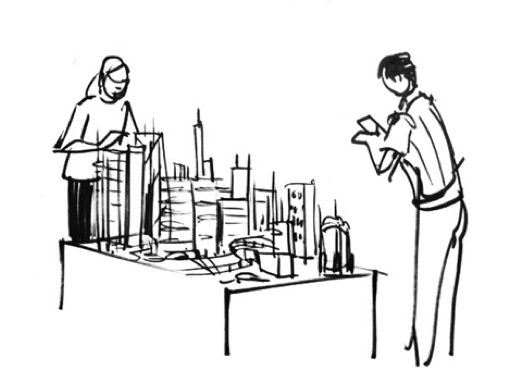
Immersive Monopoly
Better than Box Seats
Wish you were on the 50-yard line at the Super Bowl...every year? New technologies will mimic the live experience with fidelity and even allow you to choose your vantage point and zoom in on the action. Advertising in this new world will be designed with different parameters and for increased participation by the audience in a shared experience versus a static ad view.
"Here and Now" vs. "There and Then"
Feeling nostalgic? Wondering what it was like at a nightclub in the roaring twenties? The "Spotify of the Future" will incorporate richer elements of the musical experience beyond audio. Experience creators will get their chance to revive history and immerse end users through simulated time travel.
Take a tour of the fashions of the time, walk the streets and observe the environment. Adding other sensory-rich elements to these experiences, such as smells and textures, is sure to enhance the journey, and we believe that those capabilities will be on the horizon soon too.

The Roaring Twenties – a "Vintage" Experience
Educators, Put Down the Chalk, and Turn This On!
Educators, emerging technologies will shape your teaching too. New holographic displays will enable educators and experts to create rich and immersive teaching experiences and deliver personalization to students within a shared lesson plan.
How? "Storytelling" tools and new platforms will facilitate development and delivery. Students will study space and geography while immersing themselves in nuanced environments. Companies such as Pearson are paving the way with early trials in this area. And if you missed it, last year, Light Field Lab announced they were developing glasses-free holographic TVs.
Take a look at how your home might evolve in this 2016 CableLabs vision-casting video below: Near Future.
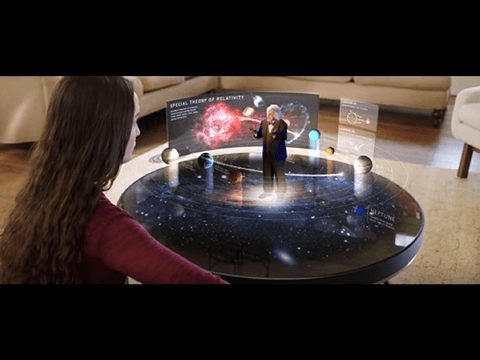
Leveling Up in the Experience Game
This revolution will not just affect end users and their experiences, it will impact the entire value chain of experience design — from development and delivery through monetization — as well as the ecosystem of storytellers, developers, studios, distributors and advertisers.
Why are we tracking this market with so much fervor? We believe the network will power the platform of the future, and we are developing the required capabilities for end users and developers. From the gaming ecosystem to healthcare and education, we are working with developers with advanced experience roadmaps to enable their success and to transform your home into a next-generation experience zone.
Visit the Emerging Technology Timeline to learn more. Reach out to the CableLabs' Market Development team to collaborate. In our next installment on this series, we will discuss the impact of Perceptive Technologies in transforming end user experiences.
About the Authors
Anju Ahuja

In our ever-evolving marketplace, Anju believes that taking a “Future Optimist” approach to solving challenging problems manifests solutions that benefit both the individual and the enterprise. Today Anju takes this approach to answer questions for emerging technologies like AR, VR, MR, AI and how they will work with traditional media, communications and the broader global cable industry. As Vice President of Market Development and Product Management, Anju leads the team whose charge is to enable transformative end user experiences, and revolutionize the delivery of new forms of content, while also unleashing massive monetization opportunities. Anju also serves on the Board of Directors of Cable & Telecommunications Association for Marketing (CTAM) as well as the President’s Advisory Council of Northern California Women in Cable Telecommunications (WICT). She is a Silicon Valley Business Journal Women of Influence 2018 honoree.
Martha Lyons

Inventor, Futurist and Technologist, Martha Lyons is the Director of Market Development at CableLabs. With a wide-ranging career at Silicon Valley high tech companies and non-profits, Martha has over two decades of experience in turning advanced research into reality. A leading authority in the initiation and development of first of kind solutions, her current focus is the identification of industry-leading opportunities for the Cable industry. She is personally interested in how advances in the areas of intelligent agents, Blockchain, bioengineering, novel materials, nanotech and holographic displays will create opportunities for disruptive innovation, to the delight of end users, in industries ranging from healthcare, retail, and travel to media and entertainment. When Martha is not inventing the future, she enjoys disconnecting from technology and spending time outdoors, preferably near some body of water.
Technology
Catalysts and Building Blocks: Emerging Technology Timeline

App Developers—welcome to your future. Significant advances in the sciences and quantum computing will allow you to create and deliver breakthrough experiences in a highly secure fashion more quickly. While the collapse of Moore's law may worry some, advances in fundamental science and technology will continue to enable exponential shifts in the solutions landscape. Near instantaneous processing speeds and intelligence at the edge will allow you to accomplish interactivity and deliver advanced services that would have previously been clunky at best or altogether impractical. The era of enhanced productivity powered by the network is here.
In part 2 of our Emerging Technology Timeline series, we continue along the innovation arc, discussing the implications of a host of new technologies and solutions built upon them, which are expected to drive fundamental shifts in the economy and society.
Some of what intrigues us:
- Bending the rules, literally, with metamaterials. Human engineered metamaterials supplementing and eventually supplanting natural resources to enable game-changing results in a broad range of industries, including but not limited to communications, healthcare, the military, and athletic apparel.
- A more secure world. New quantum information processing (QIP) techniques, combining computer science with quantum physics to accelerate information processing, and processing of complex algorithms, where classical computing would fail.
- Synthetic DNA based data storage. Biologically inspired, synthetic DNA, becoming the archival medium of choice to store the tsunami of data created year after year.
- Self-organizing networks: Self-organizing “SWARM” networks, inspired by nature, which can learn to optimize resources on their own.
Not impressed yet?
The power is actually combinatorial. Multiple catalysts combined in new ways will change your capacity to innovate and ignite activity at all levels. How do we know? It’s happened again and again. Look no further than last year for a prime example—2017 witnessed a substantive start for industries to introduce voice interfaces into their solutions and AI-based personal assistants into their customer support functions. Powered by advances in natural language processing and speech recognition, Google and others now achieve a 95% + speech recognition accuracy rate. Imagine what will come by coupling new emotion detection algorithms, which sense everything from inflections in voice to non-verbal facial cues.
What catalysts will stand out in the coming years? Some of the Catalysts & Building Blocks detailed below are merely the beginning.
Quantum Information Processing
Quantum Information Processing (QIP) will allow app developers to solve problems faster than ever before. Based on the novel encoding of data on qubits, QIP can solve combinational optimization problems much faster (and in an unconventional fashion) than classical information processing. With Quantum technologies, application developers will be able to build faster machine learning algorithms and analyze streams of data instantaneously. While qubits are inherently unstable, and their applications are in the early days of development, we believe the long-term potential is significant. The recent implementation of a quantum neural network (QNN) prototype by NTT, operating at room temperature, shows how QNNs can solve problems thousands of times faster than classical computers. Quantum Computers are expected to also enable significant advances in real-time and secure cryptographic key exchange. With capabilities like these, new real-time end user and business-oriented capabilities embedding complex security algorithms and artificial intelligence capabilities can be brought to market.
Biological Storage
Worried about the explosion of data and our ability to store it, replicate it at the edge, and secure it? Biology might have the answer. Biologically inspired storage systems will be able to hold petabytes of data encoded in “nucleotides” on a single gram of synthesized DNA. The actual numbers are astonishing: theoretically you could store one exabyte of data (equivalent to one billion gigabytes) per cubic millimeter. As a stable medium, DNA is also capable of preserving data for hundreds of thousands of years with minimal power.
Looking for more secure encryption of data? DNA encoded sequences may hold the key to a new paradigm of secure data storage, including cryptographic keys exchanged using Quantum Computers. While core problems still exist, such as the cost to write DNA and problems associated with accessing it efficiently, industry and academia are hard at work to bring DNA based storage into the mainstream.
Metamaterials
Countless new solutions and capabilities will be enabled by metamaterials, designed to exhibit chemical and physical properties not found in nature, courtesy of clever engineering. These materials, which will be stronger, more flexible, and lighter than ever before will enable advances in antennas and communications technologies, immersive displays, bio-sensing capabilities, and stealth “cloaking” applications. Recall Harry Potter’s invisibility cloak. Similar “cloaking capabilities” will become a commercial reality. Healthcare applications and services will also be built on biosensors comprised of sensitive “Metasurfaces” which can detect biomarkers in the early detection of certain cancers.
Imitation in Action
UC Berkeley’s Swarm Lab is examining what can be leveraged from the world of nature into future theories for data flow and network efficiency. Based on the swarm behavior of animal species, like ants, herds or flocks of birds, swarm networking aims to enable the network itself to make better real-time, autonomous decisions (improving efficiency and QoS).
Capitalizing on the Art of Integration
The ability to integrate these emerging technologies and apply them to use cases and business solutions beyond the sciences is not only compelling, rather it suggests app developers will want to staff up with core scientists, develop partnerships with labs, or find other means of not only staying abreast of developments but also harnessing their true potential. While new networks will emerge and support advanced solutions, the importance of the ecosystem and collaboration across industries is essential. CableLabs is developing the network requirements and new architectures to enable the rapid adoption of these technology enablers by solution developers like you. To see the entire landscape of catalysts we’ve profiled, visit our Emerging Technology Timeline. In our next installment on this series, we will discuss the impact of emerging technology in immersive media and the potential for new end user experiences.
What will you do with the plethora of new technologies? How will you harness their potential in your product roadmap? Want to collaborate with a global innovation lab powering the next generation of applications on the network?
Contact us today and find out how we can help you develop these technologies which will fundamentally change the way your end users behave and the way you will interact with them.
About the Authors
Anju Ahuja

In our ever-evolving marketplace, Anju believes that taking a “Future Optimist” approach to solving challenging problems manifests solutions that benefit both the individual and the enterprise. Today Anju takes this approach to answer questions for emerging technologies like AR, VR, MR, AI and how they will work with traditional media, communications and the broader global cable industry. As Vice President of Market Development and Product Management, Anju leads the team whose charge is to enable transformative end user experiences, and revolutionize the delivery of new forms of content, while also unleashing massive monetization opportunities. Anju also serves on the Board of Directors of Cable & Telecommunications Association for Marketing (CTAM) as well as the President’s Advisory Council of Northern California Women in Cable Telecommunications (WICT). Silicon Valley Business Journal Women of Influence 2018 honoree.
Martha Lyons

Inventor, Futurist and Technologist, Martha Lyons is the Director of Market Development at CableLabs. With a wide-ranging career at Silicon Valley high tech companies and non-profits, Martha has over two decades of experience in turning advanced research into reality. A leading authority in the initiation and development of first of kind solutions, her current focus is the identification of industry-leading opportunities for the Cable industry. She is personally interested in how advances in the areas of intelligent agents, Blockchain, bioengineering, novel materials, nanotech and holographic displays will create opportunities for disruptive innovation, to the delight of end users, in industries ranging from healthcare, retail, and travel to media and entertainment. When Martha is not inventing the future, she enjoys disconnecting from technology and spending time outdoors, preferably near some body of water.
Technology
Emerging Technologies: New and Compelling Use Cases

How will emerging technologies impact industries powered by communication networks? What will this mean for your customers and end users?
In our annual Emerging Technology Timeline (ETT), we highlight provocative new technologies that will impact the development of novel solutions and the ecosystems they serve. Are you a product tsar, strategist or developer who relies on the power of the network to deliver solutions or launch new applications? If so, then this series is written for you by the lab that is inventing networks of the future.
With hundreds of technologies in 7 sections, our timeline covers the present to 2023 and beyond. In this introduction, we touch upon some of the major themes that influenced our timeline: the body, professions reimagined, changing lifestyles and urban design.
Longer Better Lives: The Bionic You
Embellishment of the body with new and impactful technologies is putting society on the verge of a Cyber Human Revolution. Like the Industrial Revolution, this will lead to massive shifts in how we live, work and play.
In a biometrically-connected world, people will be able to better monitor their health, stress and overall well-being, helping them "find their Zen" before they’d otherwise know they need it. Innovations will emerge that enable people to overcome their disabilities: the deaf will be able to hear, the blind see, and the physically disabled walk. For many more, our well-being and day-to-day experience will be enhanced by:
- Smart diagnostic clothing
- Hearables and smart contact lenses
- Powered exoskeletons and second skins
- Ingestible robots
- Bioacoustic sensing
- Neuro-enhanced interfaces
Unlike the Industrial Revolution, the Cyber Human Revolution will see technology enable consumer and individual choice, bringing power back to labor and lifestyle in new and unusual ways. Expect the above to transform lives and unleash individual capacity to participate, produce and perform in new ways.
Professions Reimagined, Lifestyles Unshackled
Changes to the body and personal productivity will also enable a diverse and larger workforce. Changes in how we live and move about will follow. Some people may opt to live off-grid part-or even full-time, enabled by sustainable power sources, energy storage systems, water collection and monitoring, repurposing of waste into productive materials and so on.
Computers with human-like capabilities will emerge, creating a new set of jobs. True telepresence will change the workplace and lifestyles of the labor force. Autonomous vehicles will repurpose commutes and allow asset-lite living. Expect the rapid adoption and deployment of the following catalysts:
- Artificial Intelligence and Machine Learning
- Invisible interfaces
- Commercial and companion robotics
- Virtual and Augmented Reality
- Blockchain decentralized asset management
Meanwhile, mega productivity centers will emerge, which are already taking root in some of the world’s fastest growing cities, and will appear as modern-day self-sufficient villages. These megacities will require new infrastructure and design with the network at the core.
The Sensor Driven World: Sentient Cities
The surge in data-driven activity has only begun. A convergence of technologies enabling Smart Cities are on an accelerated growth curve. We believe the future urban landscape will not only be "smart;" it will be auto-adaptive via artificial intelligence and sensors embedded within the network as well as within services upon the network. The most progressive cities will appear like adaptive organisms. Expect the following to be pervasive and increasingly critical to lives and workforce productivity:
- Terabit speeds
- Intelligent bots
- Proliferation of tiny sensors
- Virtual, mixed and augmented reality
- A confluence of new services that leverage precise network capabilities
Municipalities must be increasingly futuristic and work with communications service providers to build cities of the future. Cities must respond to the increasing demands of enterprises and residents by embedding intelligence and new networks in future design. We further speculate that just as cities are competing for growth engine enterprises like Amazon, they may have to compete for talented and skilled residents in the future too. A new landscape of applications and service providers will emerge, and we are ready to enable them.
CableLabs: Leading the Way to the Networks of the Future
Our technologists and product managers are developing innovations across wired and wireless technologies, network architectures, security and artificial intelligence. Rapidly adopted innovations are often best developed across ecosystems, and we collaborate across industries dependent upon the network of the future to unleash their potential. If your solution or service depends upon advanced networks, you may be experiencing challenges related to the network or falling short with your customer experience. Our innovation lab is dedicated to removing these pain points and obstacles to your success.
Emerging Technology Timeline Part 2 and Beyond
Each month, we will bring you a new view of our Emerging Technology Timeline in the sequence below:
Think big about your product roadmap and unlock your industry's long-term potential. Check back soon for a new view of how emerging technologies and experiences will affect you and your enterprise. Not enough? Reach out to the authors to learn more.

---
About the Authors
Anju Ahuja
In our ever-evolving marketplace, Anju believes that taking a “Future Optimist” approach to solving challenging problems manifests solutions that benefit both the individual and the enterprise. Today Anju takes this approach to answer questions for emerging technologies like AR, VR, MR, AI and how they will work with traditional media, communications and the broader global cable industry. As Vice President of Market Development and Product Management, Anju leads the team whose charge is to enable transformative end-user experiences, and revolutionize the delivery of new forms of content, while also unleashing massive monetization opportunities. Anju also serves on the Board of Directors of Cable & Telecommunications Association for Marketing (CTAM) as well as the President’s Advisory Council of Northern California Women in Cable Telecommunications (WICT).
Martha Lyons
Inventor, Futurist and Technologist, Martha Lyons is the Director of Market Development at CableLabs. With a wide-ranging career at Silicon Valley high tech companies and non-profits, Martha has over two decades of experience in turning advanced research into reality. A leading authority in the initiation and development of first of kind solutions, her current focus is the identification of industry-leading opportunities for the Cable industry. She is personally interested in how advances in the areas of intelligent agents, Blockchain, bioengineering, novel materials, nanotech and holographic displays will create opportunities for disruptive innovation, to the delight of end users, in industries ranging from healthcare, retail, and travel to media and entertainment. When Martha is not inventing the future, she enjoys disconnecting from technology and spending time outdoors, preferably near some body of water.


